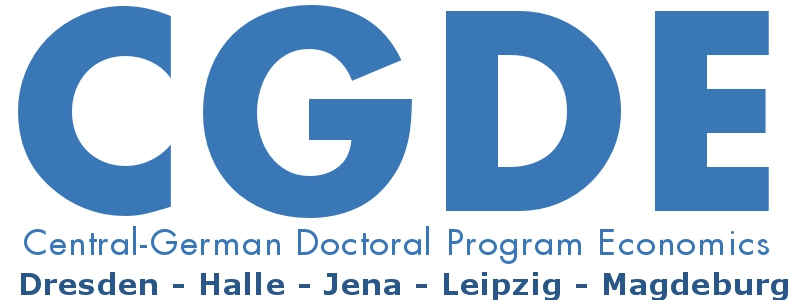Frontiers in Econometrics: Topics in Structural VAR Analysis
Lecturer: Prof. Lutz Kilian, PhD (University of Michigan)
Date: November 9, 2015 – November 12, 2015 (IWH, Halle) – (each day 09:00-12:30 pm and 14:00-17:30 pm)
Venue: Halle Institute for Economic Research (IWH) – Member of the Leibniz Association, Kleine Maerkerstrasse 8, 06108 Halle (Saale), Germany, conference room (ground floor)
Registration: Please contact Annett Hartung, E-mail: annett.hartung@iwh-halle.de, October 15, 2015
Announcement see pdf.
Overview
Structural vector autoregressive (VAR) models are widely used in macroeconomics, in empirical finance and in international finance, but also in other fields such as agricultural economics and energy economics, to quantify economic relationships in time series data. This course builds on selected draft chapters of the book “Structural Vector Autoregressive Analysis” by Lutz Kilian and Helmut Lütkepohl, which are made available to participants. These chapters are subject to copyright and may not be circulated to nonparticipants in this course. The course briefly reviews the basics of reduced-form VAR analysis including specification, estimation, and model selection. It primarily focuses on alternative methods of representing structural VAR estimates, on the identification of structural shocks, on the most common estimation methods for structural VAR models, and on asymptotic and bootstrap approaches to inference about structural impulse responses and related statistical objects. The main identification methods covered include conventional short-run and long-run identifying restrictions and sign restrictions. Time permitting, the course will also discuss less common identification approaches such as identification based on heteroscedasticity, based on nonnormality, based on financial market information, and based on external instruments. Throughout the course, the development of the structural VAR model is put in historical perspective, and structural VAR analysis is compared with alternative models used in macroeconometrics.
Prerequisites
Participants are expected to have a working knowledge of matrix algebra, statistical inference, and regression techniques and should be familiar with univariate time series analysis. A basic knowledge of macroeconomics may also be helpful.
Exam
Participants requiring a certificate must write a term paper consisting of a new substantive econometric application, the replication of an existing study in the literature, or a methodological study. It is possible for such papers to be coauthored by a team of up to three students. I recommend that you consult me about a project’s suitability and feasibility, before starting to work on the term paper. Grades will reflect the level of difficulty and originality of the project, as well as the execution and clarity of exposition. Examples of the format of academic papers may be found at http://www-personal.umich.edu/~lkilian/paperlinks.html. All code used in writing the term paper should be included in an appendix. The term paper should be submitted in Adobe Acrobat (pdf) format. Please send the paper by e-mail to lkilian@umich.edu by the end of December 19, 2015.
Contents
1. Vector Autoregressive Models
2. Vector Error Correction Models
3. Structural VAR Tools
4. Bayesian VAR Analysis
5. The Relationship between VAR Models and other Macroeconometric Models
6. A Historical Perspective on Causal Inference in Macroeconometrics
7. Identification by Short-run Restrictions
8. Estimation Subject to Short-run Restrictions
9. Identification by Long-run Restrictions
10. Estimation Subject to Long-run Restrictions
11. Inference in Models Identified by Short-run or Long-run Restrictions
12. Identification by Sign Restrictions
Optional Topics (time permitting)
13. Identification by Heteroskedasticity and Non-Gaussianity
14. Identification Based on Extraneous Data
15. Structural VAR Analysis in a Data-rich Environment
16. Nonfundamental Shocks
17. Nonlinear Structural VAR Models
18. Practical Issues Related to Trends, Seasonality, and Structural Change
Readings
Except for sections 15 and 17, the readings consist of selected draft chapters of the aforementioned book. The titles of the chapters correspond to the sections of the outline.
Additional References
Hamilton, J. D. (1994): Time Series Analysis, Princeton, NJ: Princeton University Press.
Lütkepohl, H. (2005, 2010): New Introduction to Multiple Time Series Analysis, New York: Springer-Verlag.























